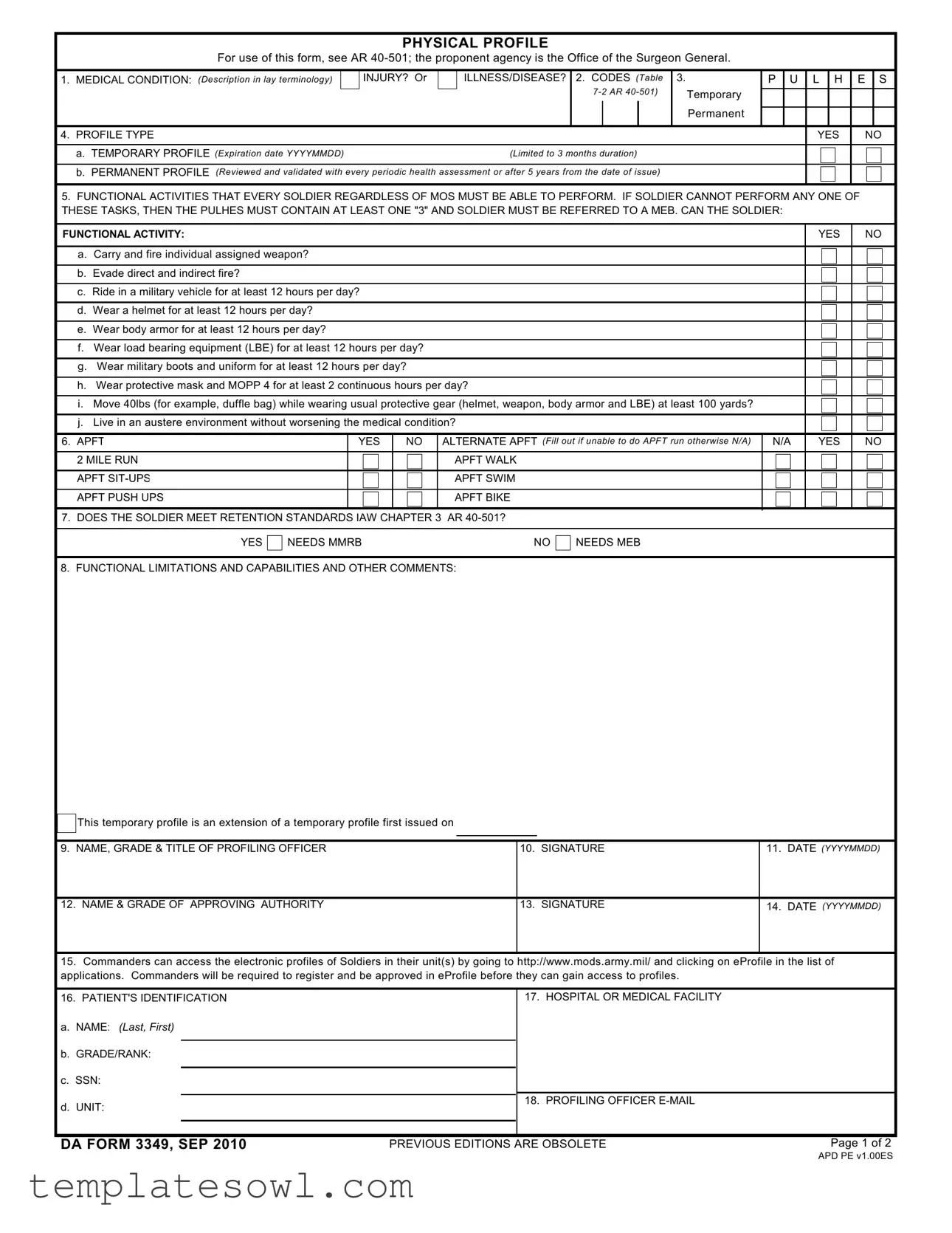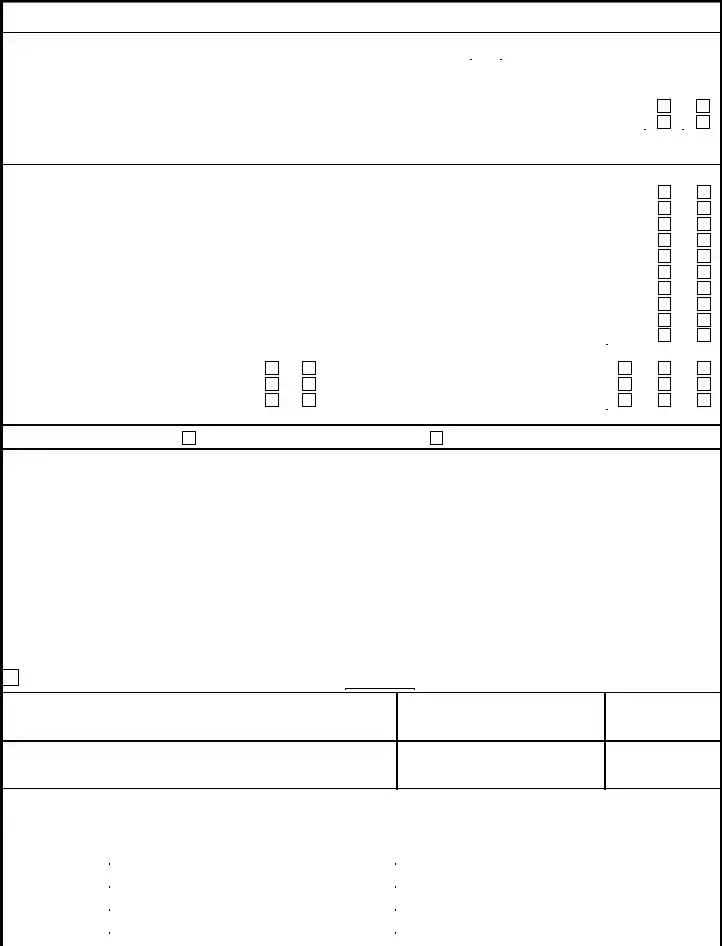What is the purpose of the DA 3349 form?
The DA 3349 form is used primarily to create a Physical Profile for soldiers, assessing their medical condition and functional capabilities. This profile helps determine whether a soldier can perform essential military duties, ensuring that they meet retention standards as established by Army regulations.
Who can fill out the DA 3349 form?
The DA 3349 form should be completed by a qualified profiling officer, typically a medical professional who understands the soldier's medical condition. This officer must accurately describe the soldier's injury or illness, following the guidelines provided in Army regulations.
What types of profiles can be issued using the DA 3349 form?
The form allows for two types of profiles: Temporary and Permanent. A temporary profile is limited to three months, while a permanent profile is reviewed and validated during periodic health assessments or every five years from the date of issuance. The duration of the profile depends on the soldier's condition and needs.
What functional activities are assessed on the DA 3349 form?
The DA 3349 examines whether the soldier can efficiently perform essential military tasks. These include carrying and firing an assigned weapon, riding in a military vehicle, and wearing protective gear for extended periods. If a soldier cannot perform any of these, they may receive a PULHES code that indicates limitations.
What is a PULHES code, and how is it used?
A PULHES code is a system that rates a soldier’s physical and mental capabilities across six categories, ranging from "1" (highly fit) to "4" (considered unfit). If a soldier has a "3" in any area, they may need to be referred to a Medical Evaluation Board (MEB) for further assessment regarding their fitness for service.
How does the form determine if a soldier can meet retention standards?
The form asks specific questions regarding physical capabilities and limitations. Based on the answers provided, a soldier may be classified as meeting or not meeting the retention standards as outlined in chapter 3 of AR 40-501. If they do not meet these standards, they may require a MEB evaluation.
What additional information is required on the DA 3349 form?
Along with the soldier’s medical assessment, the form requires the profiling officer's details, including name, grade, and signature, as well as the approving authority's information. This helps ensure that all assessments are documented and authorized properly.
How can commanders access the DA 3349 profiles for their unit?
Commanders can access their soldiers' electronic profiles through the MODS portal by visiting http://www.mods.army.mil/ and selecting the eProfile application. To gain access, commanders must register and be approved in the system, which allows for efficient management of soldier profiles.
What should I do if I believe my DA 3349 profile is incorrect?
If there are concerns regarding the accuracy of your DA 3349 profile, it is essential to address them promptly. Speak with your profiling officer or seek a second opinion from another medical professional. Documentation and communication are key to ensuring your profile reflects your true medical condition.



